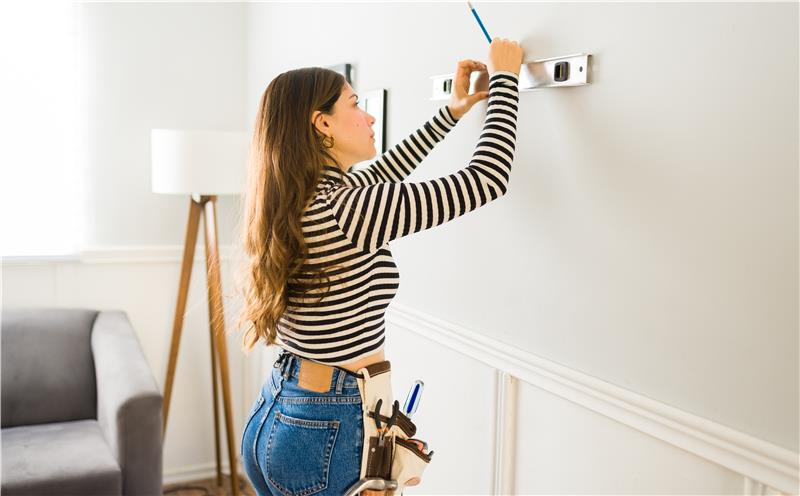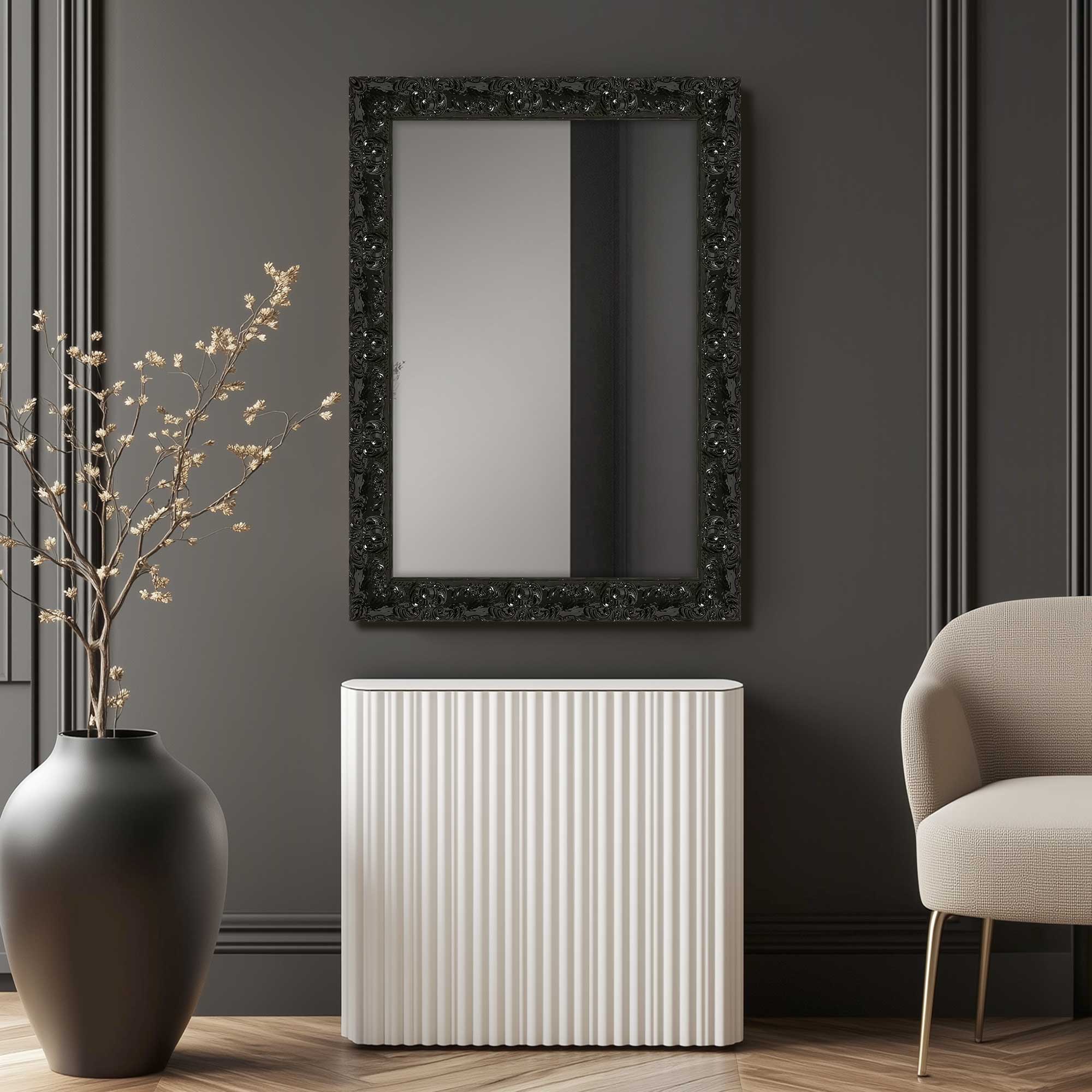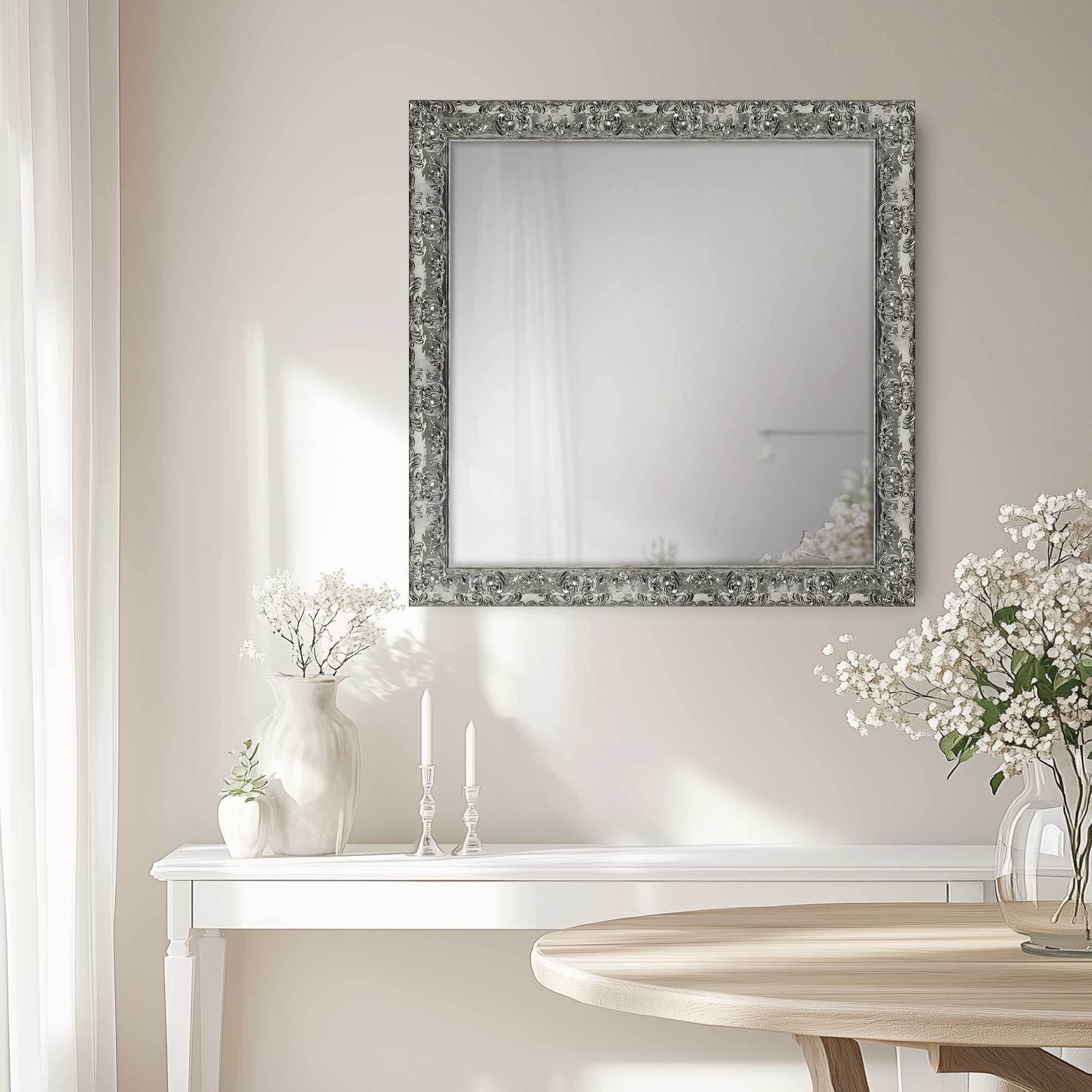Hanging a heavy mirror can be a transformative way to elevate a room’s decor. At Frametolia, our new luxury mirrors, crafted with solid wood moulding, are designed to make a bold statement in your home. However, due to their substantial weight, it’s essential to use the proper techniques and equipment to ensure both safety and durability. In this guide, we’ll walk you through the key steps for hanging a heavy mirror securely, as well as provide insight into different wall types and the appropriate hardware for each.
Why Proper Installation Is Crucial
When it comes to heavy mirrors, safety is paramount. A mirror that isn’t properly hung can easily fall, leading to potential damage to your wall or, worse, injury. Heavy mirrors—like those with solid wood moulding—require extra care during installation. They often come with hardware, but it’s important to ensure you're using the right anchors, screws, and hanging tools that match the weight of the mirror and the type of wall you're working with.
Quick Tips Before you Start
- Always choose high-quality, heavy-duty hardware to ensure the mirror stays in place.
- Avoid hanging the mirror in areas with high traffic or where it could be easily bumped, especially in homes with children or pets.
- If you are unsure about the weight limits of your anchors or screws, consult a professional or opt for a more robust installation method.
Tools & Materials You’ll Need
- Level: To ensure your mirror hangs straight.
- Tape Measure: To mark where the mirror will be placed
- Pencil: For marking on the wall
- Screwdriver or Drill: For securing screws and anchors
- Wall Anchors or Screws: Varies based on wall type - we'll get further into this below.
- Stud Finder: To locate the studs for extra support
Step-by-Step Guide to Hanging a Heavy Mirror
1. Choose the Right Location
Decide where you want to hang your mirror, and be sure the space is large enough to accommodate it. Measure the area to ensure the mirror fits well without overcrowding the wall. Mark the top center of the mirror on the wall lightly with a pencil.
2. Find the Studs
For the safest and most secure installation, find the studs in your wall. Studs provide extra support, especially for heavy items like mirrors. Use a stud finder to locate the wooden studs behind your wall. Mark these with a pencil. If you can hang the mirror directly on the studs, it will reduce the chances of damage or the mirror falling.
3. Choose the Right Hardware for Your Wall Type
The type of wall you are dealing with will determine which hardware you should use. Here’s a breakdown:
- Wooden or Panel Walls: If you’re hanging the mirror on wood paneling or wood walls, you can often go straight into the wood studs using wood screws. Be sure to choose screws long enough to go deep into the studs for added security.
- Plaster Walls: Plaster walls require a different set of anchors. Use wall anchors designed for plaster, or go for a traditional screw-in hook anchored into the studs. If you have an older home with plaster, it’s often better to avoid directly drilling into the plaster surface—always find a stud.
- Exposed Brick or Concrete: For brick or concrete walls, use masonry anchors and concrete screws. You’ll need a hammer drill to create the appropriate holes. Ensure you’re using the correct size anchors for the weight of the mirror. Concrete or brick requires more robust hardware to prevent the mirror from shifting or falling.
- Drywall: If your wall is drywall, it’s essential to use the right type of anchor. For heavier mirrors, toggle bolts or heavy-duty wall anchors are best. You’ll need to drill pilot holes for the anchors, ensuring they fit snugly.
4. Mark Your Drill Holes
Once you've determined where the mirror will hang and identified your wall’s structure, use a tape measure to mark the placement of the screws or hooks on the wall. Double-check that the marks are level by using a level tool.
5. Install the Hanging Hardware
Install the appropriate hanging hardware into the wall based on the type of wall and anchors you’re using. For stud-mounted installations, use wood screws or screws with the right anchor. For drywall or plaster, use the anchors recommended earlier to hold the weight. Be sure to install the hardware slightly into the wall, leaving a small gap to accommodate the mirror's hanging hooks.
6. Hang the Mirror
With your hardware in place, it’s time to hang your mirror. If your mirror has D-ring hangers, simply slide them over the screws or hooks. If it uses a wire system, ensure that the wire is securely placed on the hooks, ensuring it won’t slip. If your mirror has more than one hook or hanging system, double-check that the mirror is evenly balanced.
7. Check the Alignment
Once the mirror is on the wall, use your level to confirm that it’s hanging straight. Adjust if necessary, and make sure the mirror is secure before letting go. It’s always a good idea to test the installation by lightly pulling on the mirror to ensure the hardware is fully engaged and holding the weight.
Hang Luxury Mirrors with Confidence and Care
Hanging a heavy mirror can instantly elevate your space, but it’s crucial to follow proper steps and use the correct hardware to ensure safety and security. Whether your walls are drywall, brick, concrete, or plaster, choosing the right anchors and tools will ensure your Frametolia mirror stays securely in place for years to come. By taking the time to measure, mark, and use the right equipment, you’ll enjoy the beauty and functionality of your luxury mirror with peace of mind. Happy Decorating!



